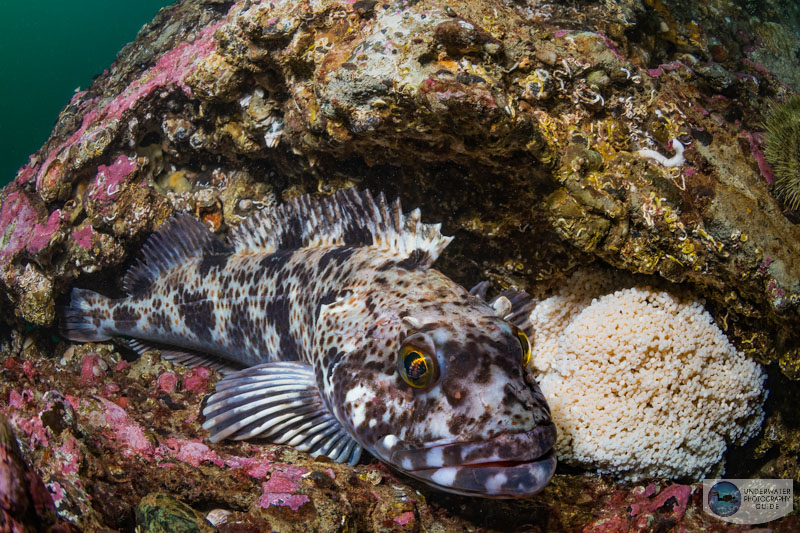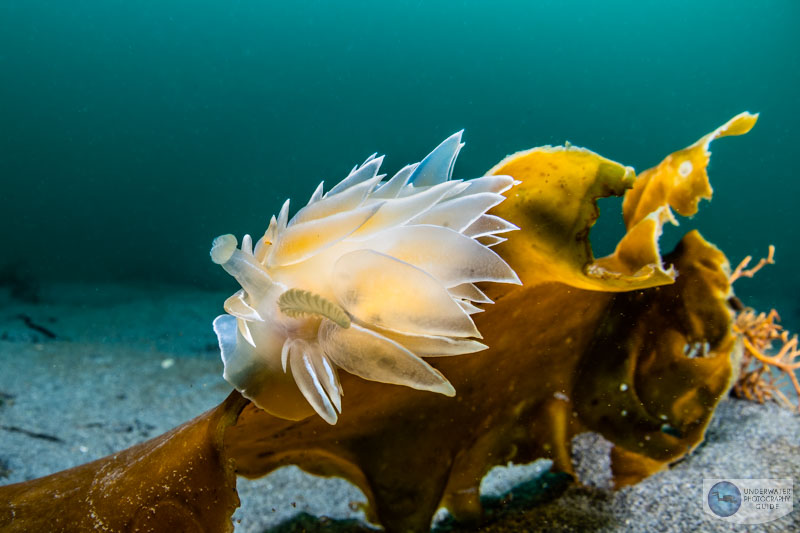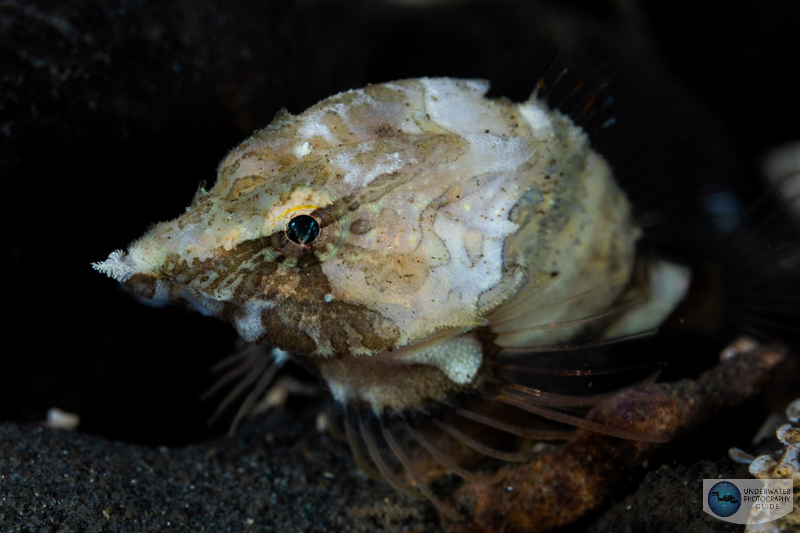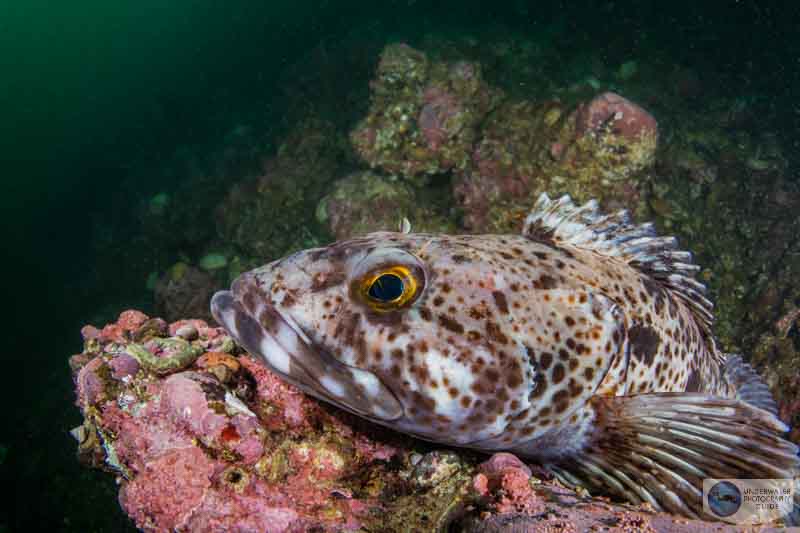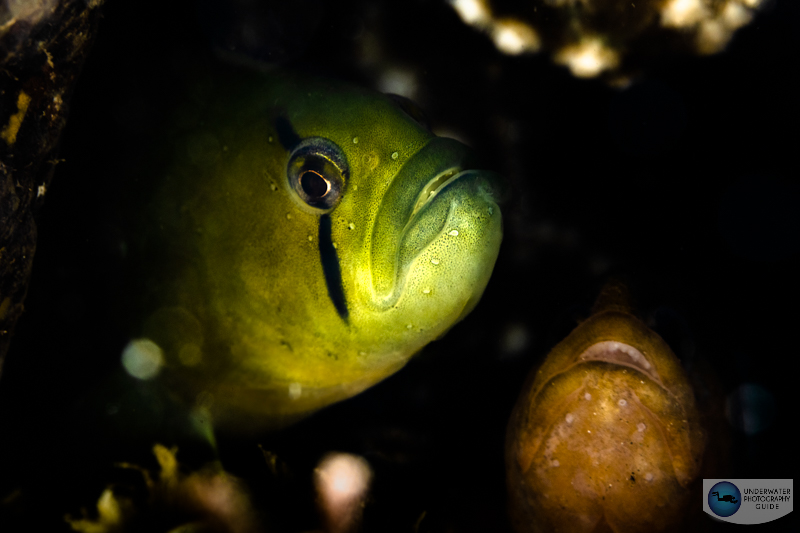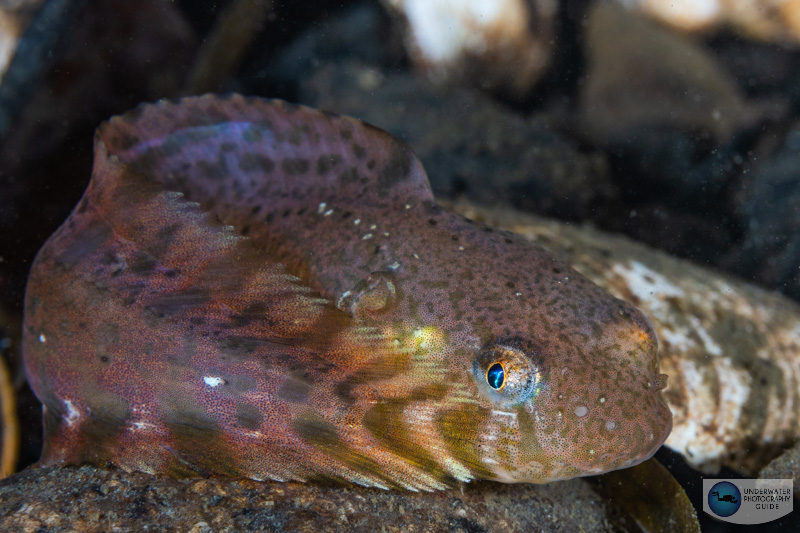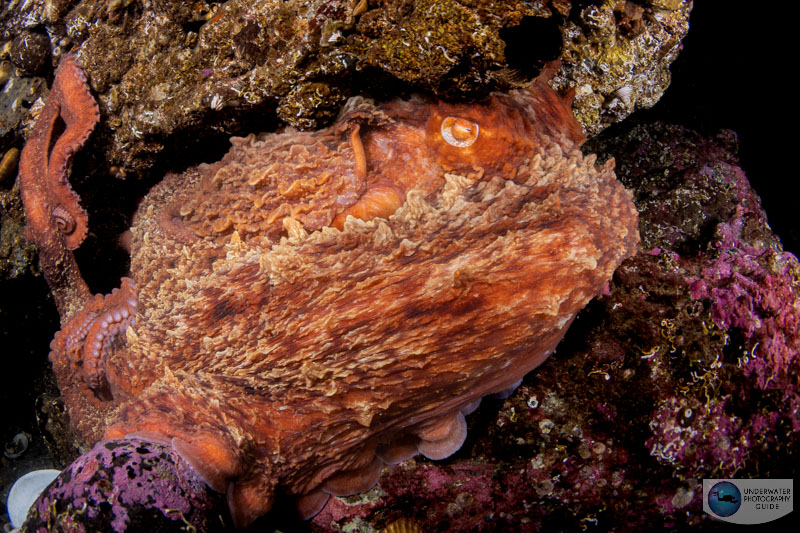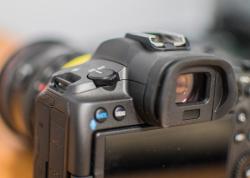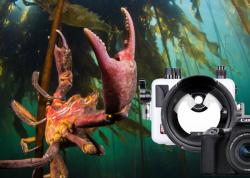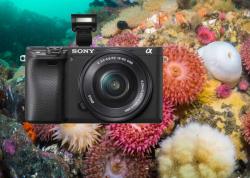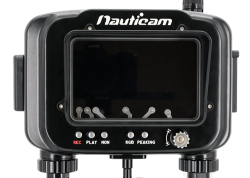Canon EOS R6 Mark II Review
The Canon EOS R6 Mark II is Canon's newest upgrade to the original Canon EOS R6 announced in 2020. While it isn't a major update, the R6 Mark II is a first-rate prosumer option for underwater photo & video shooters looking for the perfect hybrid camera. In many ways, we think it is now a compelling competitor to the Sony A7 IV, making up for some limitations of the Canon EOS R6.
The Canon R6 II has been equipped with a higher resolution, 24.2 megapixel sensor and is capable of recording oversampled 4K video up to 60 fps. With a higher frame rate, the Canon EOS R6 Mark II is a more compelling camera for video shooters as well as photo shooters who may have turned away from the "low" resolution, 20 mp sensor initially offered on the R6.
I had the opportunity to shoot the R6 Mark II during four cold dives in the Pacific Northwest, with air temperatures in the 20s and water temperatures in the 40s. Despite the cold, it was a fun shooting experience. We saw some beautiful nudibranchs, lots of nesting lingcod, and on one dive I barely made it back with my camera after being hugged by a giant pacific octopus!
Video Filmed with the Canon EOS R6 Mark II in an Ikelite Canon EOS R6 Mark II housing, Canon 8-15mm fisheye lens and the SeaLife SeaDragon 5000+ video light
The camera itself felt familiar in my hands and posed a very similar shooting experience to its predecessor. This Canon EOS R6 Mark II underwater review will cover everything you need to know for underwater photo & video including our recommend R6 Mark II housings, recommended underwater lenses, and sample images.
Jump to a Section
Specifications | Key Features | Who Should Buy?
Underwater Housings | Underwater Lenses
Canon EOS R6 Mark II Specifications
US MSRP: $2499 for the body
- 24.2 megapixel full-frame CMOS sensor
- RF mount lens system (EF mount lenses work with an EF-EOS R adapter)
- DIGIC X processor
- 1/200 shutter sync speed (with strobes)
- Dual-pixel CMOS autofocus, covering 100% of sensor
- Subject tracking AF (humans, dogs, cats, birds, horses, racing cars, motorbikes, aircraft, and trains)
- Autofocus in lowlight down to -6.5 EV
- ISO 100-102400 (50 - 204,801 expandable)
- JPEG, RAW, C-RAW 14-bit, 10bit HEIF still shooting
- up to 4K/60p video recording (oversampled from 6K with no crop)
- 1080p recording up to 180 fps
- C-Log3 picture profile for video editing
- 3.69 million dot EVF (electronic viewfinder)
- Dual SD/SDHC/SDXC and UHS-II card slots
- Size: 138.4 x 98.4 x 88.4 mm
- Weight: 1.5 lb/670g with card and battery
Canon EOS R6 Mark II Key Features
A Higher Resolution Sensor
Perhaps the most exciting feature of the Canon EOS R6 Mark II is the new, 24.2 megapixel sensor. The original R6 had turned many photographers away with its initial 20 megapixel sensor - especially in a world where 24-25 megapixels has become the standard for a mid-range full-frame camera. Although the 4.2 megapixel difference is quite small, a 24.2 megapixel sensor will form a good psychological basis to get people excited about the R6 Mark II.
In practicality, it was very difficult for me to notice a difference in the image quality between the R6 and R6 Mark II. It was nice to have a little more cropping ability that I took advantage of, but I would recommend a higher resolution body, like the Canon R5 or Sony A7R V, to those looking to crop. For wide angle photography and casual photos for medium size prints and social medial, this sensor is perfect
Most of my photos were captured in exceptionally dark environments. Though some of my images were underexposed or photographed at higher ISOs, I found the recovery ability from both the shadows and highlights to be quite good. The nudibranch image below was initially quite blown out with deep shadows in the kelp areas of the image. I was able to even out this image with minimal noise or loss of detail.
Reorganized Autofocus
The Canon EOS R6 Mark II features the same reorganized autofocus system found on the Canon EOS R7 and R10 - one of the fastest autofocus systems in the world. With autofocus points covering the full width of the sensor, it's reassuring to know that you can compose your image any way you want to. The R6 Mark II outperforms the Canon EOS R5 when it comes to subject detection. I found that animal eye autofocus tracking worked even on fish (about 50% of the time). When I was photographing lingcod, I had the autofocus acquire their eyes while shooting wide angle for the first time.
What was most noticeable about shooting the R6 Mark II was that it is not possible to use autofocus tracking in all of the autofocus servo AF area modes. This makes it really easy to acquire any subject, lock onto it, and recompose. I stuck with the single spot area mode as I felt it was the most accurate and did a great job at acquiring autofocus on my subjects.
Ergonomics and Battery Life
The Canon R6 Mark II's body is very similar to other Canon full frame mirrorless cameras. In fact, the Ikelite housing fits both the original R6 and the R6 II. That said, there has been a key change to the body that will likely make it incompatible with the original R6 housing for most brands. The on/off switch has been moved to the right side of the camera and the left side now has a video and photo toggle switch. I loved using the video/photo toggle switch as I could easily switch between photo and video modes underwater. Other than that, if you're a Canon shooter, you'll find the Canon R6 Mark II to be a very familiar feeling camera.
The battery life has been improved to a rating of 580-760 shots. I found it to be on par with the performance of the R7 and R10. I could easily get through a full day of diving on one battery, and that's all anyone really needs in a camera.
5 Axis In-Body Image-Stabilization
We can't talk about the Canon R6 Mark II without mentioning its stellar in-body image stabilization (IBIS) system. The R6 Mark II is capable of 8 stops of correction with an optically stabilized lens. In practice, this means you can shoot at much lower shutter speeds without worrying about camera shake causing motion blur. It also allows you to film extremely steady handheld video - even macro video with a long macro lens (like the RF 100mm macro).
It was extremely useful using the IBIS system to take slow shutter shots to bring out the greens from the dark water I was shooting in. Check out the photo below shot at 1/40 sec!
Stellar Video Features
With the Canon EOS R6 Mark II it's clear that Canon listened to its userbase when redesigning the camera for video. The 4K video on the camera has bee upgraded to capturing 4K/60p with no crop, oversampled from 6K. This is great news for underwater shooters because you can now captured super detailed, high resolution video and still have the ability to slow it down in post processing to keep it stable. This was extremely useful when I filmed the giant pacific octopus as it was fighting with me, trying to take my camera away.
Video Filmed with the Canon EOS R6 Mark II in an Ikelite Canon EOS R6 Mark II housing, Canon 8-15mm fisheye lens and the SeaLife SeaDragon 5000+ video light
The R6 II also offers an C-Log3 logarithmic profile which allows you to capture more dynamic range, if you are willing to work with you files in post processing. If you want to go even a step further - the R6 II also allows for 6K RAW recording to and external recorder via micro HDMI.
It looks like Canon has made some improvements to the R6 Mark II's heat management, and this camera likely will not overheat during a dive. It didn't for me but I was filming in cold water. Initial reports indicate that you should be able to record for about 1.5 hours in 4K/60p.
Who should buy the Canon EOS R6 Mark II?
Overall, we think the Canon EOS R6 Mark II is a compelling camera for anyone looking for the perfect hybrid camera for every day shooting and medium size prints. With a similar price point to the Sony A7 IV, it represents a better option for most underwater shooters with better underwater lens options and better video quality overall. However, the Sony A7 IV is still a compelling option for those that want even more resolution and an easy way to do a custom white balance underwater.
Canon EOS R6 shooters probably shouldn't consider upgrading to the Canon R6 Mark II - unless they need incrementally higher resolution or 4K/60p recording. R6 video shooters will likely want to consider an upgrade over R6 photo shooters.
Canon EOS R6 Mark II Underwater Housings
Currently there are three great underwater housing options for the Canon EOS R6 Mark II at Bluewater Photo.

The Ikelite Canon R6 Mark II underwater housing is an excellent, affordable polycarbonate option that fits both the original R6 and the Mark II. We shot this housing while shooting our review of the camera and thought it had excellent trim and was lightweight underwater. We loved the back button autofocus lever and shutter lever controls. The back of the housing has been upgraded slightly with a rounder back and a better fitting camera tray.

The Marelux R6 Mark II underwater housing is an excellent anodized aluminum housing option. Marelux offers custom colors as well as innovative accessories like a smart magnified viewfinder, an automatic vacuum pump, and a hydrophone. Make sure you keep up to date with our content to see all the cool new innovations from Marelux
 .
.
The Nauticam Canon R6 Mark II housing is a classic anodized aluminum housing from Nauticam. It features a patented port locking system and great ergonomics.
Recommended Underwater Lenses
Macro
Macro lenses enable to you get close up shots of little critters.
Canon RF 100mm f/2.8L Macro IS USM: This is the best macro lens for small and shy subjects due to a larger working distance. It’s also an essential tool for supermacro photography when combined with a macro diopter. The Canon RF 100mm macro is a superior lens compared to the EF version because is has an additional magnification and can capture photos at a supermacro 1.4:1 ratio. The Canon RF 100mm is also equipped with a spherical abberation control ring.
Canon EF 100mm f/2.8L Macro IS (with EF-EOS R Adapter): This is a great macro lens for small and shy subjects due to a larger working distance. It’s also an essential tool for supermacro photography when combined with a macro diopter.
Nauticam Super Macro Converter: The Nauticam super macro converter (SMC-1) is a wet diopter that can help capture sharp macro and super macro images. It’s the strongest, sharpest diopter on the market. If you are a super macro photographer, this diopter is best used with the Canon 100 mm f/2.8 macro.
Wide Angle Fisheye
Wide angle fisheye lenses allow for an ultra-wide field of view but result in a distorted image. The distortion is reduced underwater to the angle of refraction of light through the water.
Canon EF 8-15mm f/4L circular fisheye (with EF-EOS R Adapter): This is going to be the best choice for a full-frame fisheye lens. At 8mm, the lens vignettes over itself creating a cool, artistic, circular fisheye affect. For traditional fisheye images, just zoom into 15mm and you will capture beautiful ultra-wide angle shots without vignetting. We tested this lens with the Canon EOS R6 Mark II and loved its functionality and quick autofocus with autofocus tracking.
Rectilinear Wide Angle
Rectilinear wide angle lenses retain a wide field of view but do not exhibit the distortion found on fisheye lenses. They are great for large animals like sharks and reefscapes.
Canon RF 14-35mm f/4 L IS USM: This lens is our top rectilinear wide angle lens choice for underwater photographers using an EOS R style mirrorless camera. With a reduced flange distance in the RF lens mount, the corner sharpness produced by the RF 14-35mm is incredible for a rectilinear lens. That being said, be aware that this lens produces vignetting at 14 mm. Plan on using this lens as a "16-35mm" equivalent. Most underwater shooters use rectilinear wide-angle lenses for shooting subjects that don't come close enough to fill the frame with a wide fisheye lens: sharks, whales, sea lions, dolphins, etc.
Canon EF 16-35 f/2.8 III Ultra-Wide Zoom lens (with EF-EOS R Adapter): This lens is the a great choice for those who are buying their first wide-angle lens and don't have a strict budget. Most underwater shooters use rectilinear wide-angle lenses for shooting subjects that don't come close enough to fill the frame with a wide fisheye lens: sharks, whales, sea lions, dolphins, etc.
Canon EF 16-35mm f/2.8L II Wide-Angle Lens (with EF-EOS R Adapter): This has been the most popular rectilinear wide-angle lens for Canon full frame. This lens sat at the top of the selection for the last few years in terms of corner sharpness, speed, and price... although that will change as more new shooters purchase the version III.
Canon EF 11-24mm f/4L Ultra Wide-Angle Lens (with EF-EOS R Adapter): Want the widest lens you can buy? The Canon 11-24mm offers a much wider field of view than the 16mm. This perspective is great for reefscapes, massive wrecks and very wide shots where you do not want the distortion of a fisheye lens. The downside is that this lens is larger, heavier and more expensive than the other wide-angle lens choices.
Conclusions
The Canon EOS R6 Mark II just might be the best hybrid (photo/video) prosumer camera model of this year. With a higher resolution sensor and reorganized autofocus system, it's a great option for underwater photographers. Underwater video shooters are going to love the ability to shoot 4K/60p in an affordable full-frame body. Although my dives with this camera were short lived, they were eventful. I thoroughly enjoyed the shooting experience and could see having the R6 Mark II by my side for years to come.
RECOMMENDED ARTICLES
SUPPORT THE UNDERWATER PHOTOGRAPHY GUIDE:
The Best Service & Prices on u/w Photo Gear
 Visit Bluewater Photo & Video for all your underwater photography and video gear. Click, or call the team at (310) 633-5052 for expert advice!
Visit Bluewater Photo & Video for all your underwater photography and video gear. Click, or call the team at (310) 633-5052 for expert advice!
The Best Pricing, Service & Expert Advice to Book your Dive Trips
 Bluewater Travel is your full-service scuba travel agency. Let our expert advisers plan and book your next dive vacation. Run by divers, for divers.
Bluewater Travel is your full-service scuba travel agency. Let our expert advisers plan and book your next dive vacation. Run by divers, for divers.




